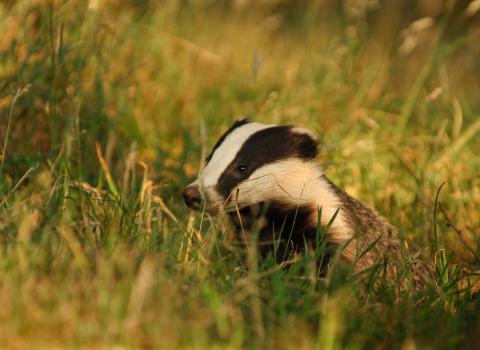Wildlife watching activities at the Audrey Randell Hide in Tewin Orchard are organised by the Herts and Middlesex Badger Group.
If you are interested in finding out more or booking onto an event, please visit the Badger Group's webpage, or contact them on 07596 903520 or tewinhide@gmail.com.
Any queries regarding the broader Tewin Orchard & Hopkyns Wood nature reserve and its management should still be directed to the Trust’s Nature Reserves Team in the first instance via reserves@hmwt.org.

